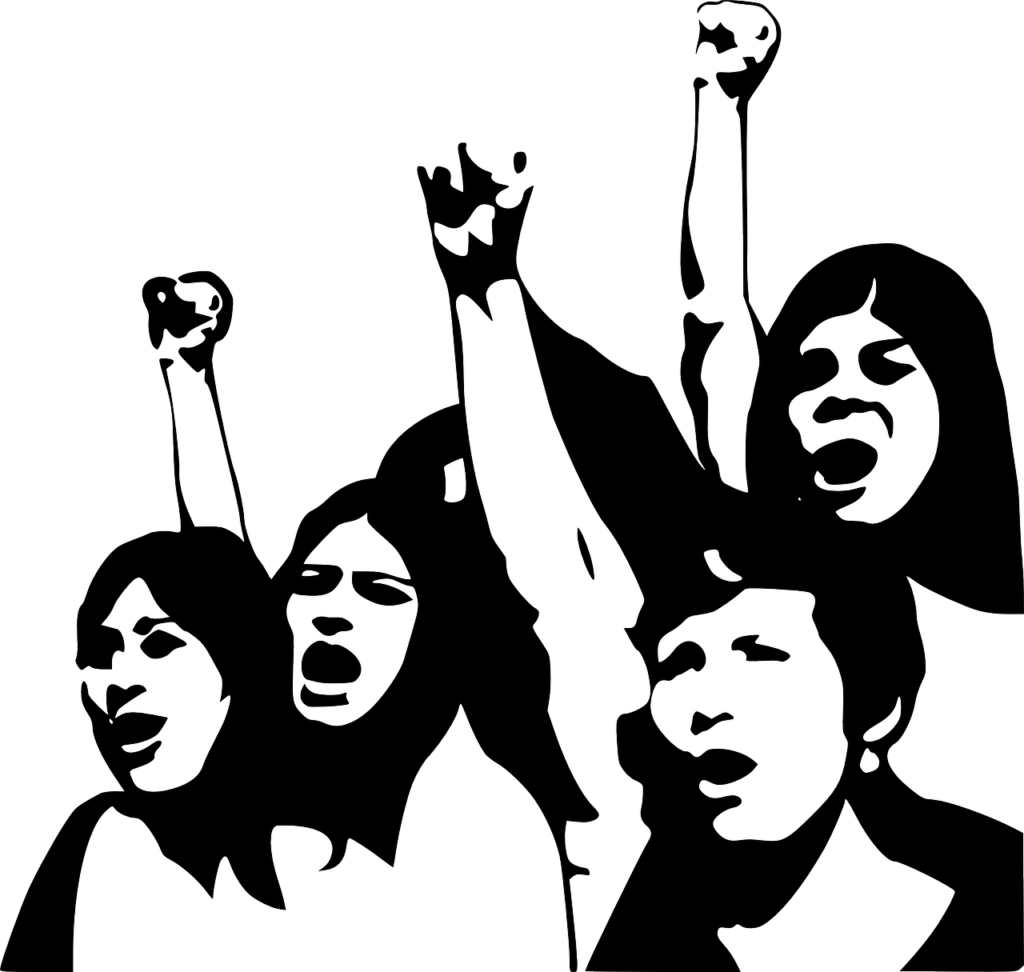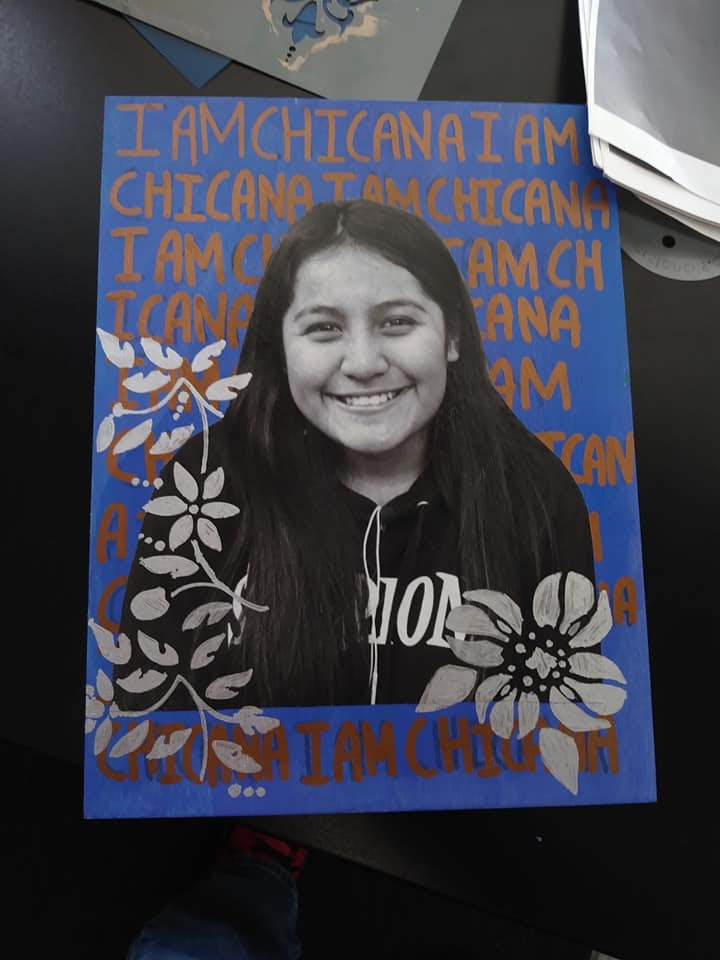1968 East LA Walkouts
After the Supreme Court eliminated the establishment of segregated schools with the ruling of Brown v. Board of Education (1954), conditions within high schools for Latino students, specifically Mexican American students located in East Los Angeles did not improve. In particular, five high schools in East LA faced a lack of bilingual teachers, Latino faculty, resources, materials, and a 60% dropout rate among students. The lack of educational benefits caused students to organize a walkout in March of 1968 as a means to express the need for better conditions, more college graduates, and Chicano representation within the school.
 Essential Questions
Essential Questions
The following essential questions provide a framework for exploring the main ideas and themes of this unit
- How have young adults impacted school conditions in history?
- What are some examples of modern protest students have participated in?
New Jersey Student Learning Standards
The following materials and lesson plan may be used to meet these learning standards for New Jersey Students
6.1.12.HistorySE.14.a+b ? ×
×
6.1.2.CivicsPI.4+5 ? ×
×
6.1.2.CivicsCM.1+2+3 ? ×
×
6.1.2.CivicsPR.4 ? ×
×
6.1.2.HistoryUP.3 ? ×
×
6.1.2.HistoryCA.1 ? ×
×
6.1.5.CivicsPI.1+2 ? ×
×
6.1.5.CivicsPD.2 ? ×
×
6.1.5.CivicsDP.2 ? ×
×
6.1.5.CivicsPR.3 ? ×
×
6.1.5.CivicsCM.1+6 ? ×
×
6.1.12.HistoryCC.13d ? ×
×
Lesson Module
 Learning Goals and Objectives: The objective of this module is to present resources and information on citizen participation of Mexican-American students in Los Angeles during 1968. Using the walkout and peaceful demonstrations as an example, students can learn how young people can express their voice and make a change within their community.
Learning Goals and Objectives: The objective of this module is to present resources and information on citizen participation of Mexican-American students in Los Angeles during 1968. Using the walkout and peaceful demonstrations as an example, students can learn how young people can express their voice and make a change within their community.
Content: Included in this module are suggested activities, discussion questions, infographics, and other digital resources to assist teachers and students in engaging with the themes, implications, and history of the 1968 student walkouts. These resources can be used in a class in relation to citizen participation, social movements, political changes and their community.
Activity I: History
Context: In 1968, there was a national movement of young people addressing the war in Vietnam and civil rights. These movements influenced Chicano students in East Los Angeles to protest the conditions of their schools. Not only was there a lack of financial and material resources for the students, there was also a lack of Mexican faculty in schools where most of the students were Mexican-American. The five schools, Garfield, Roosevelt, Belmont, Lincoln, and Wilson, had a dropout rate that reached 60%, hindering the future of these students. Many of the students ended up in crime, unstable jobs, joining the war in Vietnam, poverty due to a lack of education, or the labor fields.
 A committee of 12 students and 1 teacher, Sal Castro, organized and planned the student walkouts for over a year in 1967, preparing to launch a mass protest to raise awareness of the flaws of the East LA school system in the first week of March. However, a couple of days before the scheduled walkout, the principal at Wilson High School cancelled the student play which triggered the students to walkout on March 1. By March 5th, thousands of students from Garfield and Wilson High School would walkout, with the other high schools promptly following and increasing the total number of protestors from 15,000 to 20,000 by March 8. These protests quickly gained the attention of the East Los Angeles Board of Education and on March 28, students, teachers, community members, and other participants involved formed the “Educational Issue Coordinating Committee” to list their demands. Some of these demands involved bilingual education, classes on Mexican culture, access to more literature on campus, ability to use the bathrooms throughout the entirety of the school day, and Spanish integrated curriculum.
A committee of 12 students and 1 teacher, Sal Castro, organized and planned the student walkouts for over a year in 1967, preparing to launch a mass protest to raise awareness of the flaws of the East LA school system in the first week of March. However, a couple of days before the scheduled walkout, the principal at Wilson High School cancelled the student play which triggered the students to walkout on March 1. By March 5th, thousands of students from Garfield and Wilson High School would walkout, with the other high schools promptly following and increasing the total number of protestors from 15,000 to 20,000 by March 8. These protests quickly gained the attention of the East Los Angeles Board of Education and on March 28, students, teachers, community members, and other participants involved formed the “Educational Issue Coordinating Committee” to list their demands. Some of these demands involved bilingual education, classes on Mexican culture, access to more literature on campus, ability to use the bathrooms throughout the entirety of the school day, and Spanish integrated curriculum.
Instructions: Use the timeline and video to introduce students to the origin of the 1968 East LA Walkouts. You may also view the list of demands sheet to further explain what the students were walking out for. Test your students’ understanding of the history with this Kahoot.
Activity II: Key Figures
 Instructions: This activity gives students the opportunity to learn more about key figures from the student walkout. Divide the class into small groups so you can develop a discussion about the key figures on our Key Figures page. Then ask the students to answer one of the discussion questions, then they will share their answers with the other members of the group.
Instructions: This activity gives students the opportunity to learn more about key figures from the student walkout. Divide the class into small groups so you can develop a discussion about the key figures on our Key Figures page. Then ask the students to answer one of the discussion questions, then they will share their answers with the other members of the group.
Discussion Questions
- How would you describe the motivations of the key figures of the student walkout?
- What are three adjectives that in your opinion help describe the key figures? Explain why you chose those adjectives?
- In what ways can students practice their civic skills at school today?
Activity III: Legacy
 The Board of Education explained that due to a lack of funding, the demands could not be fully met. Still, they had agreed to adding more Mexican American faculty and reducing overcrowded classrooms, but did not have the financial resources to implement these demands immeditely. However, there were still instant positive effects afterwards and overtime, these demands were met. One year after the students’ walkout, the benefits could be seen at The University of Los Angeles (UCLA), which accepted nearly 2,000 students, an increase of 1,900%. In addition, the school increased Mexican American faculty, adopted the use of bilingual classes, and reduced the number of students in a class to improve education and student care. Over time, the students enrolled in East LA high schools saw an increase in college enrollment. Today, the drop out rate is below 30% at most of the high schools with the lowest at 13%. In addition, this walkout served as an example that students and young people have the ability to improve their educational conditions which ultimately affects their future careers. Many of the students who organized the walkouts and worked on the demands list went on to become successful and continued to serve in their Latino community. The voice of this Chicano movement continues to influence young people, especially young people protesting gun violence today.
The Board of Education explained that due to a lack of funding, the demands could not be fully met. Still, they had agreed to adding more Mexican American faculty and reducing overcrowded classrooms, but did not have the financial resources to implement these demands immeditely. However, there were still instant positive effects afterwards and overtime, these demands were met. One year after the students’ walkout, the benefits could be seen at The University of Los Angeles (UCLA), which accepted nearly 2,000 students, an increase of 1,900%. In addition, the school increased Mexican American faculty, adopted the use of bilingual classes, and reduced the number of students in a class to improve education and student care. Over time, the students enrolled in East LA high schools saw an increase in college enrollment. Today, the drop out rate is below 30% at most of the high schools with the lowest at 13%. In addition, this walkout served as an example that students and young people have the ability to improve their educational conditions which ultimately affects their future careers. Many of the students who organized the walkouts and worked on the demands list went on to become successful and continued to serve in their Latino community. The voice of this Chicano movement continues to influence young people, especially young people protesting gun violence today.
Instructions: The legacy and benefits of the 1968 East LA Walkouts are long lasting and continue to influence today’s student activists all over the nation. After watching the video, reading both the article and short text, have students fill out a S I T worksheet in which the students write a fact they find Surprising, a fact they find Interesting, and a fact they find Troubling. Then, have them discuss their answers among their peers.
*The S I T worksheet was created by Facing History and Ourselves – a website that offers lessons, teaching resources, and worksheets for teachers to use in the classroom
Activity IV: Hands on Activity
 Instructions: In groups or individually, create a piece of artwork or literature that showcases an issue that you care about in an artistic way. For example, students can create a poem, banner, letter to one of the movement figures, song, t-shirt, flag, etc as means of expressing their opinion and the issues they care about, just like the East LA students.
Instructions: In groups or individually, create a piece of artwork or literature that showcases an issue that you care about in an artistic way. For example, students can create a poem, banner, letter to one of the movement figures, song, t-shirt, flag, etc as means of expressing their opinion and the issues they care about, just like the East LA students.
This first poster below depicts a student showcasing their Chicana roots. You may do something similar and connect it to an issue that affects you or your community. The second idea is a protest banner, similar to the ones students used in 1968, create a banner in any language about an issue that you care about.

Materials
 Don’t have time to use these activities? Already have a lesson plan?
Don’t have time to use these activities? Already have a lesson plan?
Here are links to the materials presented above for you to use!
Activity I: Timeline, Más Fuerza Video, List of Demands, Kahoot
Activity II: Key Figures page.
Activity III: National School Walkout Times Article, S I T worksheet
Activity IV: “I am Chicana” – Melissa Torres

